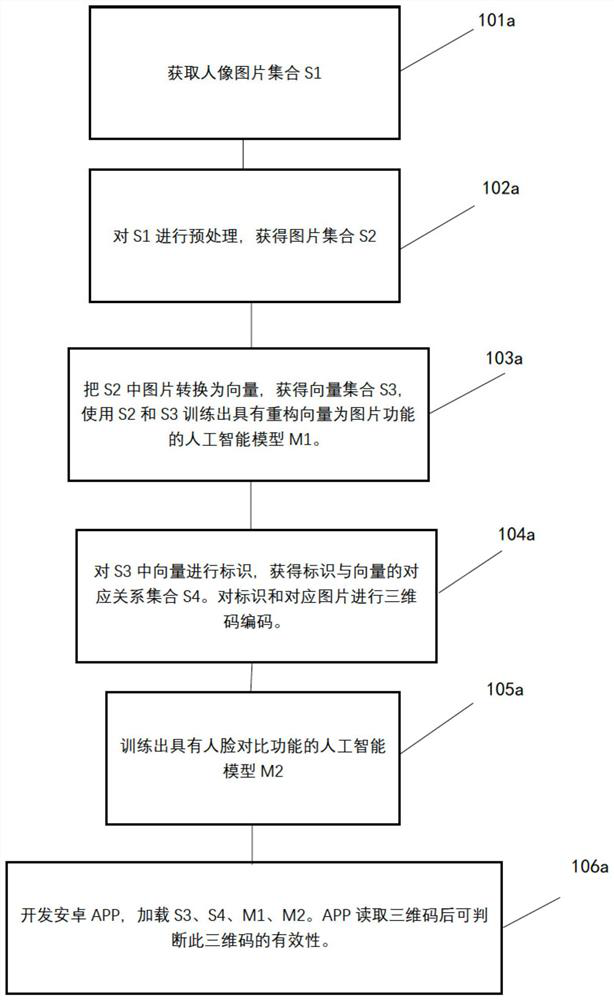Offline reading method and device based on three-dimensional code and image recognition
An image recognition and three-dimensional code technology, applied in the field of image recognition and three-dimensional code technology, can solve the problems of original data leakage prevention, achieve the effect of saving space, improving verification efficiency and accuracy, and ensuring safety
- Summary
- Abstract
- Description
- Claims
- Application Information
AI Technical Summary
Problems solved by technology
Method used
Image
Examples
Embodiment 1
[0051] see figure 1 , an off-line reading method based on three-dimensional code and image recognition, comprising the following steps:
[0052] Step 101a: Create an original image collection S1, collect a plurality of original images containing objects to be identified and put them into the original image collection S1; the format of the picture can be the Joint Photographic Experts Group (JPEG) format, portable network Graphics (Portable Network Graphics, PNG) format, or bitmap (Bitmap, BMP) format.
[0053] Step 102a: Perform image preprocessing, perform preprocessing on each original image in the original image collection, adjust the original images into image materials with the same size and format (such as a JPEG format image of m×n size) and Put it into the material collection S2.
[0054] Step 103a: Perform image reconstruction, process each image material in the material set, obtain the pixel matrix of the image material, use the singular value decomposition method ...
Embodiment 2
[0061] Further, the objects to be identified include but are not limited to: human faces, objects and characters. In this embodiment, the original images collected by the original image set S1 are all portrait pictures; in step 101a, the original images are After the original image set S1 is put into the verification step, the original image is converted into the pixel value of each pixel point and taken out and stored in a pixel array, and the array is passed as a parameter to the detectMultiScale function of OpenCV for target detection. This function identifies the key coordinate points with clear semantics on the face, such as the tip of the nose, the corners of the mouth, and the corners of the eyes. If these key coordinate points are not recognized, the function considers that there is no human face in the picture; if it is recognized, it is considered that there is a human face in the picture; the picture that does not detect a human face is regarded as an unqualified pic...
Embodiment 3
[0090] An off-line reading device based on three-dimensional code and image recognition, including a memory and a processor, the memory stores instructions, and the instructions are suitable for being loaded and executed by the processor as described in Embodiment 1 and Embodiment 2. An off-line reading method based on three-dimensional code and image recognition.
PUM
 Login to View More
Login to View More Abstract
Description
Claims
Application Information
 Login to View More
Login to View More - R&D
- Intellectual Property
- Life Sciences
- Materials
- Tech Scout
- Unparalleled Data Quality
- Higher Quality Content
- 60% Fewer Hallucinations
Browse by: Latest US Patents, China's latest patents, Technical Efficacy Thesaurus, Application Domain, Technology Topic, Popular Technical Reports.
© 2025 PatSnap. All rights reserved.Legal|Privacy policy|Modern Slavery Act Transparency Statement|Sitemap|About US| Contact US: help@patsnap.com



